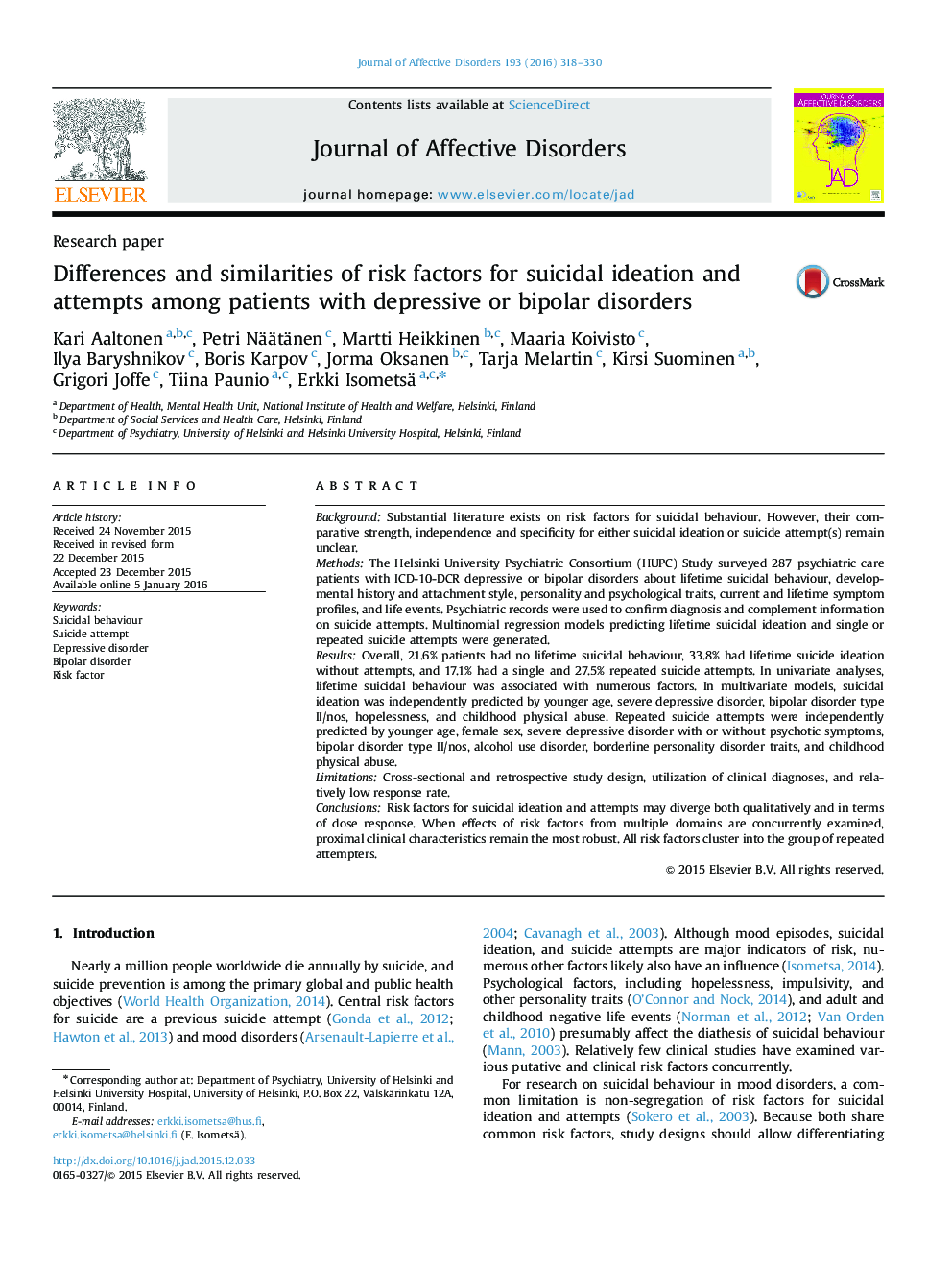| کد مقاله | کد نشریه | سال انتشار | مقاله انگلیسی | نسخه تمام متن |
|---|---|---|---|---|
| 6230496 | 1608132 | 2016 | 13 صفحه PDF | دانلود رایگان |
- Risk factors for suicidal ideation vs. attempts in mood disorders are not identical.
- Transition from suicidal ideation to suicidal acts is a critical step.
- Patterns of dose-response and qualitative differences exist in these risk factors.
- Numerous risk factor domains associate with suicidal behavior, if unadjusted.
- In multivariate analyses, proximal clinical risk factors remain the most robust.
BackgroundSubstantial literature exists on risk factors for suicidal behaviour. However, their comparative strength, independence and specificity for either suicidal ideation or suicide attempt(s) remain unclear.MethodsThe Helsinki University Psychiatric Consortium (HUPC) Study surveyed 287 psychiatric care patients with ICD-10-DCR depressive or bipolar disorders about lifetime suicidal behaviour, developmental history and attachment style, personality and psychological traits, current and lifetime symptom profiles, and life events. Psychiatric records were used to confirm diagnosis and complement information on suicide attempts. Multinomial regression models predicting lifetime suicidal ideation and single or repeated suicide attempts were generated.ResultsOverall, 21.6% patients had no lifetime suicidal behaviour, 33.8% had lifetime suicide ideation without attempts, and 17.1% had a single and 27.5% repeated suicide attempts. In univariate analyses, lifetime suicidal behaviour was associated with numerous factors. In multivariate models, suicidal ideation was independently predicted by younger age, severe depressive disorder, bipolar disorder type II/nos, hopelessness, and childhood physical abuse. Repeated suicide attempts were independently predicted by younger age, female sex, severe depressive disorder with or without psychotic symptoms, bipolar disorder type II/nos, alcohol use disorder, borderline personality disorder traits, and childhood physical abuse.LimitationsCross-sectional and retrospective study design, utilization of clinical diagnoses, and relatively low response rate.ConclusionsRisk factors for suicidal ideation and attempts may diverge both qualitatively and in terms of dose response. When effects of risk factors from multiple domains are concurrently examined, proximal clinical characteristics remain the most robust. All risk factors cluster into the group of repeated attempters.
Journal: Journal of Affective Disorders - Volume 193, 15 March 2016, Pages 318-330
